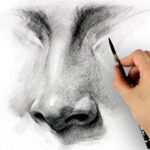The artwork “Art:5ndyx8rclxe= Tlaloc” presents a compelling exploration of the Mesoamerican deity Tlaloc, embodying the intricate interplay between cultural heritage and contemporary artistic expression. By employing modern techniques such as Art:5ndyx8rclxe= Tlaloc painting and mixed media, the piece not only honors Tlaloc’s significance as a life-giving force but also provokes contemplation on the destructive aspects of nature. This duality prompts a critical examination of how spirituality and community identity are interwoven with our environmental experiences, raising questions about our own relationship with the natural world and the legacy we leave behind. What implications does this have for our understanding of such deities today?
Cultural Significance of Tlaloc
Tlaloc, the ancient Mesoamerican god of rain and fertility, frequently held a central role in the cultural and religious practices of various pre-Columbian civilizations, particularly among the Aztecs and the Maya. His significance extended beyond mythology; Tlaloc was integral to the agricultural rituals that sustained these societies. The cyclical nature of rainfall, which Tlaloc governed, was vital for crop growth and, by extension, the survival of these civilizations.
Tlaloc mythology encapsulated a duality that reflected both life and death. His benevolent aspect brought rain to nourish crops, while his wrath could unleash destructive storms, highlighting the delicate balance between sustenance and devastation.
Agricultural rituals dedicated to Tlaloc were elaborate, involving offerings such as flowers, food, and even human sacrifices, intended to appease him and ensure bountiful harvests.
These rituals not only reinforced the community’s dependence on Tlaloc but also fostered a collective identity centered around shared beliefs and practices. Such cultural significance underpinned the social and political structures of these civilizations, illustrating how the reverence for Tlaloc transcended mere mythology to shape the very fabric of Mesoamerican life.
Read Also: Art:5fj9ptitvuq= Space
Modern Techniques in Art:5ndyx8rclxe= Tlaloc
The evolution of modern art has been significantly influenced by a variety of innovative techniques that reflect contemporary societal values and technological advancements. Among these, digital painting has transformed the artistic landscape, enabling creators to explore new dimensions of expression and creativity. This technique allows artists to manipulate color, texture, and form with unprecedented precision, often resulting in works that challenge traditional boundaries.
Mixed media has also emerged as a powerful tool for artists seeking to convey complex narratives. By combining various materials and methods—ranging from collage to sculpture—artists can create multifaceted pieces that invite viewers to engage on multiple levels. This approach not only fosters experimentation but also mirrors the diverse experiences of modern life.
Both digital painting and mixed media serve as platforms for freedom of expression, empowering artists to communicate their unique perspectives and societal critiques. In an age where personal stories are increasingly valued, these techniques facilitate a dialogue between the artist and the audience, encouraging a deeper appreciation for the myriad ways art can reflect and shape our world.
As we embrace these modern techniques, the possibilities for artistic expression continue to expand, inviting us to explore new horizons.
Nature and Spirituality Connection
Many artists draw profound inspiration from the intricate relationship between nature and spirituality, often exploring how natural elements can evoke deeper emotional and spiritual connections. This synergy manifests vividly in their work, as they create spiritual landscapes that reflect inner journeys and external realities. By incorporating nature symbolism—such as the serene flow of water representing renewal or the steadfastness of mountains symbolizing strength—artists invite viewers to engage with their own spiritual narratives.
The connection between nature and spirituality transcends mere aesthetics; it serves as a catalyst for introspection and enlightenment. Artists often depict scenes where the natural world becomes a mirror for the soul, illustrating how the beauty of the environment can facilitate profound existential realizations. Through immersive landscapes and rich symbolism, they encourage a dialogue between the viewer and the essence of existence.
As we navigate our increasingly complex lives, the intersection of nature and spirituality offers a sanctuary. It beckons us to reconnect with the world around us, urging us to reflect on our place within the cosmos.
This artistic exploration fosters a sense of freedom, inviting us to transcend the mundane and embrace the divine through the lens of nature.
Read Also: Art:5dor0qguztg= Eyes Drawing
Conclusion
The portrayal of Tlaloc serves as a vivid reminder of the intricate balance between life and destruction inherent in nature. Through the masterful Art:5ndyx8rclxe= Tlaloc of modern techniques, the artwork transcends mere representation, beckoning viewers to confront their own understanding of spirituality and community. As the colors and textures unfold, a question lingers: what deeper truths about existence and the cosmos await discovery within this Mesoamerican deity’s duality? The journey into Tlaloc’s essence has only just begun.







